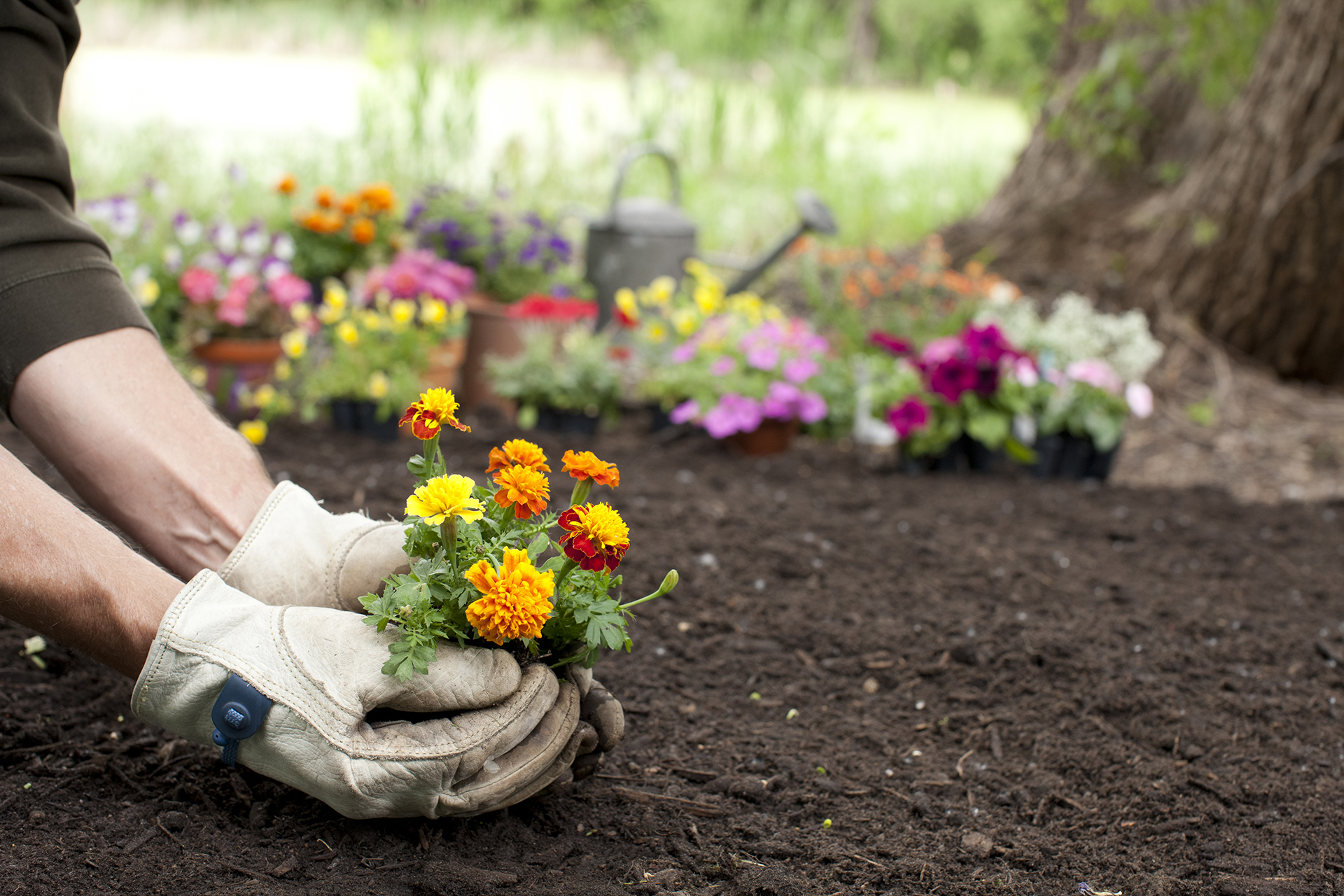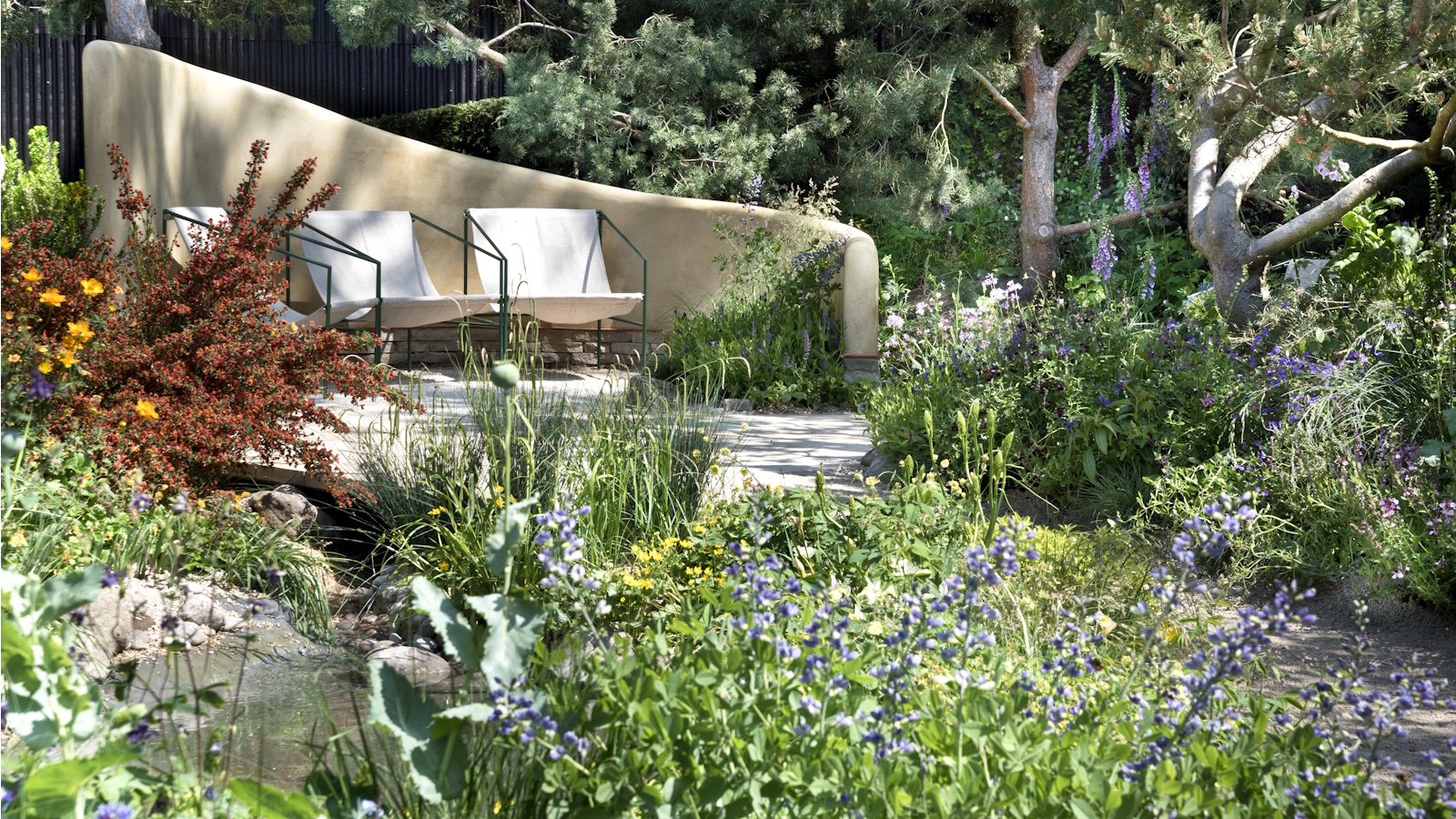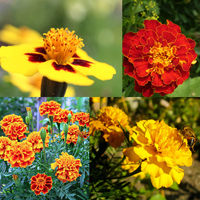When to plant marigolds outdoors – for blazing color and cut flowers
Discover when to plant marigolds outside for fiery flowers that attract wildlife and fill vases all summer long


The flame-bright flowers of marigolds light up the backyard throughout summer and provide a steady supply of fresh cut flowers for the house.
On top of that, these annual plants smell wonderful and lure beneficial insects that protect edible crops from predators.
It's easy to grow marigolds from seed, and they are available in bold, fiery shades of orange or gold marigolds are a welcome sight amongst your other flower bed ideas. Our guide has the lowdown on when to plant them outdoors.
When to plant marigolds
In this guide, we are looking at when to put in ready-grown plants. When you sow seeds indoors if you are growing in this way will usually pre-date transplanting outdoors by six to eight weeks before the last frost.
There are two main types: Calendula and Tagetes. Calendula are better for cutting, but both can be used for companion planting in the vegetable garden or for ornamental color. Our guide has details on when to plant marigolds of either type.
‘Plant marigolds in pots or use them to fill in holes in the summer perennial bed,’ says Ohio-based garden designer Ethan McGory. ‘They are very productive and easy to grow from seed.’
When to plant Calendula marigolds outdoors
Being a hardy annual, pot marigold (Calendula officinalis) can be sown direct into the soil outside in March, April, or May for summer flowers the same year. Alternatively, they can be sown direct into the soil outside in August or September for flowers the following year.
Once sown, thin the seedlings to 12in (30cm) apart, protect them from slugs, and water regularly (especially in dry, hot weather).
Pot marigolds (Calendula) can be bought as bedding plants from plant nurseries or as seedlings via mail order in May or June. Plant in well-drained soil or containers in sun.
When to plant Tagetes marigolds outdoors
‘Tagetes seeds can be sown outdoors after danger of frost has passed in your region,’ says Kelly Funk, President of Park Seed. In temperate climates (such as the northern US), this is May and June.
Sow these half-hardy annuals into moisture-retentive, well-drained soil in sun, around 10in (25cm) apart. ’When sowing outdoors, sow at a depth that is four times the width of the seed,’ advises Kelly.
Buy and plant Tagetes as ready-grown bedding plants in May or June. Use them to brighten gaps in borders, in moisture-retentive, well-drained soil in sun. Alternatively, plant them in pots or window planters.
If you have grown your own plants from seed, harden them off before planting outside – for example, by placing them in a cold frame or by sitting the plants outside during the day for a week covered with fleece, then gradually remove the fleece.
NatureZ Edge Marigold Seeds Mix, Over 5600 Seeds, $11.49 at Amazon
This is a beautiful mix of three types of marigold seeds, including Dainty Marietta French, Petite French, and Sparky French.
FAQs
Do marigolds come back every year?
Calendula and Tagetes are annuals, so they only live for one year. However, if sown early and then deadheaded or regularly cut for the vase, marigolds will flower for months, sometimes from May to November. Calendulas will often self-sow, giving you more flowers the following year.
What should marigolds not be planted near?
There aren’t many plants that marigolds shouldn’t be planted near but avoid planting them near beans – a study published in Environmental Entomology showed French marigolds inhibited the growth of snap beans.
Sign up to the Homes & Gardens newsletter
Design expertise in your inbox – from inspiring decorating ideas and beautiful celebrity homes to practical gardening advice and shopping round-ups.

Having graduated with a first class degree in English Literature, Holly started her career as a features writer and sub-editor at Period Living magazine, Homes & Gardens' sister title. Working on Period Living brought with it insight into the complexities of owning and caring for period homes, from interior decorating through to choosing the right windows and the challenges of extending. This has led to a passion for traditional interiors, particularly the country-look. Writing for the Homes & Gardens website as a content editor, alongside regular features for Period Living and Country Homes & Interiors magazines, has enabled her to broaden her writing to incorporate her interests in gardening, wildlife and nature.
-
 Victoria Beckham has a unique formula for perfect bedding: 'Very expensive sheets and cheap pillows' – you can follow her example from $15
Victoria Beckham has a unique formula for perfect bedding: 'Very expensive sheets and cheap pillows' – you can follow her example from $15Victoria revealed she goes for crisp, white bed sheets and pillows with neck support from Target – and you can shop similar buys at an ultra-low cost
By Hannah Ziegler Published
-
 I just discovered the best non-toxic product for getting rid of ants in your yard – and you probably already have it in your bathroom cupboard
I just discovered the best non-toxic product for getting rid of ants in your yard – and you probably already have it in your bathroom cupboardThis household item is an effective ant deterrent that doesn't leach harmful chemicals into your soil
By Tenielle Jordison Published
